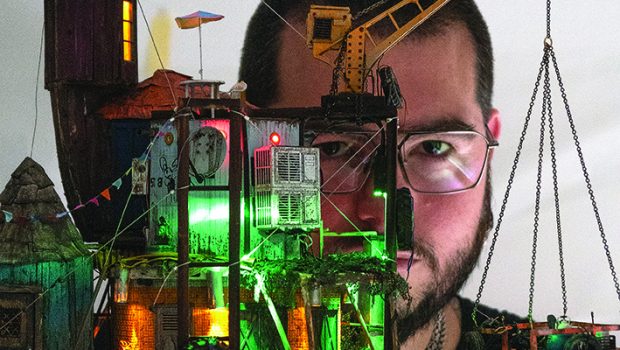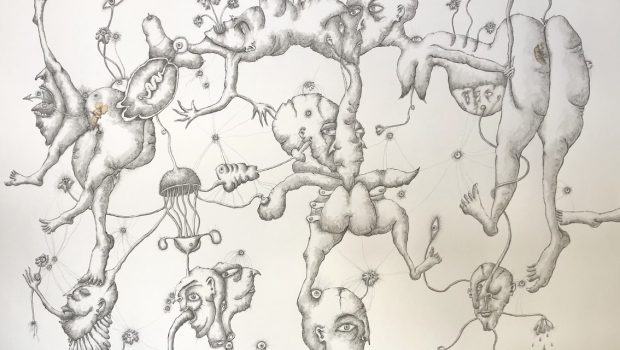Afterlife
Eben Alexander’s story about the day he died and came back to tell the tale
What did he write about? Well, he wrote about what happened to him in 2008; he wrote about that day when he died and came back to tell the tale.
n one nightmarish evening, a rare form of meningitis wreaked havoc inside his brain.Within a few hours, his blood pressure went to zero, his breathing stopped and his heart whispered its last fading pulses. Then a last gasp of breath, and a flat line. According to Dr Alexander, real life was just about to start for him. Even though a pump was keeping his body alive, to everyone he was virtually brain dead. And then it happened. Alexander recounts how he found himself “existing” in a pitch black pit of nothingness. It was “boiling and muddy “and he was “surrounded by a machinery-type sound, deep beneath him”. Dr Eben says that he had no memory of his human life and the conception of time, space and language were gone. Alexander felt that he could exist in different places and states at the same time. More hideously, he recounts how he had a strong sense of sprouting “dark black roots” which seemed to have gone on “for years and years, if not for eternity.” It is only when Eben screamed “God help me! God help me!” that an intense bright spiralling light came to his aid. In this light he found love, comfort, immense joy and a deep desire to remain forever in its embrace. He calls this, his heaven.
There are some accounts which are far more pleasant. Pam Reynolds was a famous singer and song writer when in 1991 she was diagnosed with a serious aneurism in her brain. This meant that she had to undergo a complicated brain surgery in which her body would be taken to 16 degrees Celsius, inducing cardiac arrest, and her brain would be drained from all the blood. Dr Michael Sabom, a cardiologist and researcher of Near Death Experiences (NDE), says that if you had to create a laboratory experiment to put a person close to death ( or even over to the other side) and back again then Reynolds’ surgery would come very close to being an example. Just as three different computer screens confirmed that her brain was completely inactive, Pam felt herself being awakened by a fastidious noise which turned out to be the toothbrush-looking driller which was the designated tool to open her skull. Then she departed from her body.
She describes her point of view as “if I were sitting on the doctor’s shoulders.” She could hear the nurses discuss her condition and she could see her shaved skull being opened. She looked at all of this with a mixture of curious indifference. The doctors who were interviewed were absolutely adamant that it is impossible for a person in those conditions to hear or see anything, let alone follow a conversation.
But Pam’s experience went further than that. Similarly to Dr Alexander, Reynolds had no conception of space and time and she could also be in many places at the same time. Out of nowhere a bright light appeared at the end of a long tunnel. She recounts how this immensely bright light dragged her further and further towards it and it was impossible to resist it. At the end of the tunnel she could hear a distinct voice calling her and when she reached it, she realised that it was her deceased uncle. The experience was indescribably beautiful. There were many people who greeted her with love and affection. At one point during her journey (she pauses to wipe her tears as she recounts) she asked her uncle if the light is God.“No, God is not the light. The light is what happens when God breathes.”
“… All of them experience profound freedom after leaving their body behind and when they are back they have no interest in earthly affairs but only in propagating that love they experienced…”

Few would disagree that it is extremely hard to read these stories and stop that little smile from appearing. That smile is the daughter of doubt. No question in science, mathematics or religion is as important as the very simple one: what happens after we die? Millions of people like Reynolds and Alexander have experienced first-hand that consciousness subsists even when the body is dead. But is there any scientific basis to this?
It is well known that inside every cell in our body, including nerve cells, there is a vast network of cylindrical structures known as Microtubules. Dr Stuart Humeroff, an anaesthesiologist and professor at the University of Arizona, explains that these Microtubules are excellent computational devices that organize information inside the cells including those of the brain. In his research Dr Humeroff applies theories from Quantum Physics to study the computational process inside these microtubules.
It is well known that Quantum Physics predicts that particles can exist at different places at the same time: a theory known as superposition. So if these microtubules obey the laws of quantum physics then information inside them can be also at more than one place at a time. It is in this deep region of the brain wherein consciousness is said to originate. Now if consciousness subsists even after death, that is after these microtubules are destroyed and information leaks out, could this explain Alexander and Reynolds ‘sensations of coexisting at different places at
the same instant?
The research in this field is still at an infant stage and there are no facts or proofs. One major aspect is beyond doubt however, and this is the tremendous impact that NDE’s leave on those who experience them. All of those who went through these journeys come back as changed people. Doctors and psychiatrists have collected a vast database of information and found many features to be in common.
All of the people experiencing NDE’s are no longer afraid of death. They are all “sad” that they had to come back, but they were all told that their mission in life was not yet complete. Almost all of them see their entire life, in all its minute details, flashing before their eyes. All of them experience profound freedom after leaving their body behind and when they are back they have no interest in earthly affairs but only in propagating that love they experienced.
So does this confirm what many religions have taught us or is this the result of cultural conditioning? Is it such a surprise that many witness angles, Jesus and a bright light? Many researchers agree that what most of us learn in the Judeo-Christian teachings has a profound effect, even at a subconscious level, on how we look at life and death. This means that these visions experienced could be a direct result of the layers of religious teachings we have been subjected to and are thus illusions and not real experiences. But how can a patient who has absolutely no possibility of sensory activity (as the brain is tuned off) experience delusions which are the product of memory?. If the brain is deactivated, some doctors counter argue, there can be no memory and thus no delusions. It is a deep debate and one which is not likely to be solved in our lifetimes.
So back to our daily habits: Wake up, dropkick the alarm, wash, dress, eight to five and then back home and GOTO step 1. Who the hell has time to think about God, death and heaven? Sometimes it’s better that way perhaps: to keep going and act as if, at a human level, we will live forever. But when I do stop and think about it, the words of the French thinker Pascal always seem to come back to me: “If you gain, you gain all; if you lose, you lose nothing. Wager, then, without hesitation, that HE is…” For think about it: if we bet that there’s something beyond life, then we might gain the ultimate price, or else lose nothing if there isn’t. But what if we bet the opposite and there really is something? I’ll leave you all (and myself) to ponder that in the company of a heavenly glass of red wine (no pun intended).








